
Western Regions Tavern
***Known issues*** When loading back from another scene, sometimes resulting in a return to the initial dialogue. Sorry for this issue, please be patient and go through again.
The game's initial loading time may be lengthy, please be patient.
"Western Regions tavern" is a tavern simulation game themed around Silk Road cuisine and exotic ambiance, catering to the needs of its customers.
In this place called the Silk Road, various ethnicities gather - there are chivalrous adventurers, alluring and passionate women, and even mysterious and unpredictable tales of ghosts and monsters.
Your story begins here.
You become the chef of the Silk Road Inn, seeking out the ancient legends of this place. This struggling little inn surprisingly attracts the most charming customers, who are willing to share their stories as long as their desires are met.
How to Play
Progress the plot dialogue within the storyline dialogue box by clicking the left mouse button, and make choices at key options.
Grilling: Click the mouse to flip the meat, and based on dialogue box prompts and visual changes, determine whether it is cooked. Success is achieved when all the meat is grilled.
Cutting Cake: Follow detailed instructions and press space at the right time.
About the project
In this project, I collaborated with Cengyue Yuan to create the "Western Regions Tavern." We chose the theme "The World in a Game", drawing inspiration from the movie "Midnight Diner," which portrays how a diner offers warmth and comfort to those weary from a day's work.
Game Introduction
"Western Regions Tavern" is a TAVG (Text Adventure Video Game) themed around Silk Road cuisine and exotic flavors, integrating cooking elements into gameplay. We plan to incorporate simulation management elements to simulate the day-to-day operations of the tavern. In the game, players embody a promising chef who interacts with townsfolk coming to dine, serves satisfying dishes, and gradually uncovers local legends.
Based on Culture - "The World in a Game"
In the film "Midnight Diner," the small eatery attracts many customers at midnight, where they unwind from the day's fatigue, share intriguing stories, and find solace in delicious food. The movie's stories revolve around the customers, with food serving as a medium to gradually reveal their inner desires. These stories foster a deeper connection between the audience and the characters. We aimed to create a game set in a Western Regions tavern in a similar vein. Unlike the movie, players in the game can actively engage in these interactions. The game's interactive narrative allows players to influence the story's direction, creating a unique storytelling experience.
The Beginning
Initially, the concept of this project wasn't my idea. Cengyue Yuan approached me to discuss creating an AVG dialogue system in Unity. After Cengyue shared the concept of the Western Regions Tavern, I was captivated by the diverse emotions Cengyue wanted to express through the game—not just the joy of cuisine but also the warmth of camaraderie found in the martial arts world, rooted in Chinese Wuxia culture. This refers to the trust, loyalty, and integrity maintained among individuals in the martial arts world, a time of heroic deeds. Cengyue's narrative integrity, passion for culinary themes, and dedication to storytelling reflected this spirit. It felt like being part of a martial world, secure with a righteous friend. Hence, I also placed my trust in Cengyue and started working together on the Western Regions Tavern. Cengyue took charge of the script, character design, and art, while I handled the programming, game interactions, and feedback.
We doing great
Dialogue System
Before Cengyue approached me to join the project, there existed a dialogue system using scriptable objects to store dialogue content and options, executed sequentially through a script. I attempted to add controls for sound and character portraits to this system without success. We eventually abandoned this system. Coincidentally, we were learning how to use the Ink system in our narrative class, which included using Ink's tag feature to pass information to Unity. We added functionalities such as playing music, changing backgrounds, and triggering UnityEvents on the script provided by our teacher, allowing us to control most functions needed in a TAVG through Ink. Later, we also used Ink to create a save function. Compared to managing numerous scriptable objects, Ink offered a more visual way to handle dialogue information and made editing easier.
Time
Every Sunday, regardless of our progress, we would report on our work, which I found encouraged me to work more efficiently in the days leading up to the meetings. Even when facing deadlines for other assignments, we always respected each other's time. This has been the most efficient collaboration I've experienced, with almost no mutual restrictions due to lagging progress.
We Need to Improve
Dialogue Structure
In the dialogue process, players should gather story information. However, in the current dialogue, this aspect feels more like an interrogation. Some options are structured in a way that makes the dialogue feel unnatural. We need to further explore how to progressively convey information to the player rather than having them interrogate NPCs. However, this approach significantly increases the length of the script and, considering the feedback from various responses, the volume of text work is substantial. We need to either cut down on story content or reduce the interactivity of the text.
| Status | In development |
| Platforms | HTML5 |
| Author | BrianZhang |
| Made with | Unity |

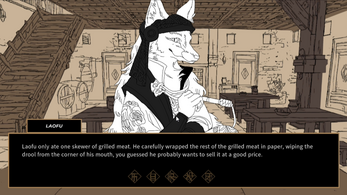
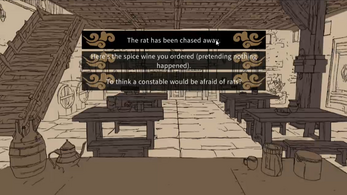
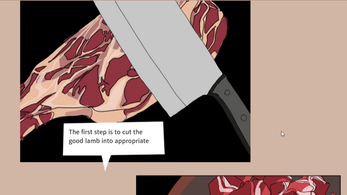
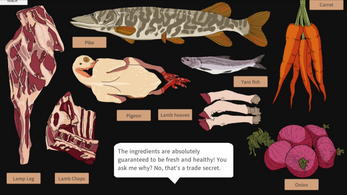
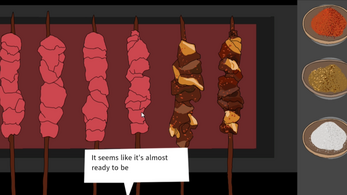
Leave a comment
Log in with itch.io to leave a comment.